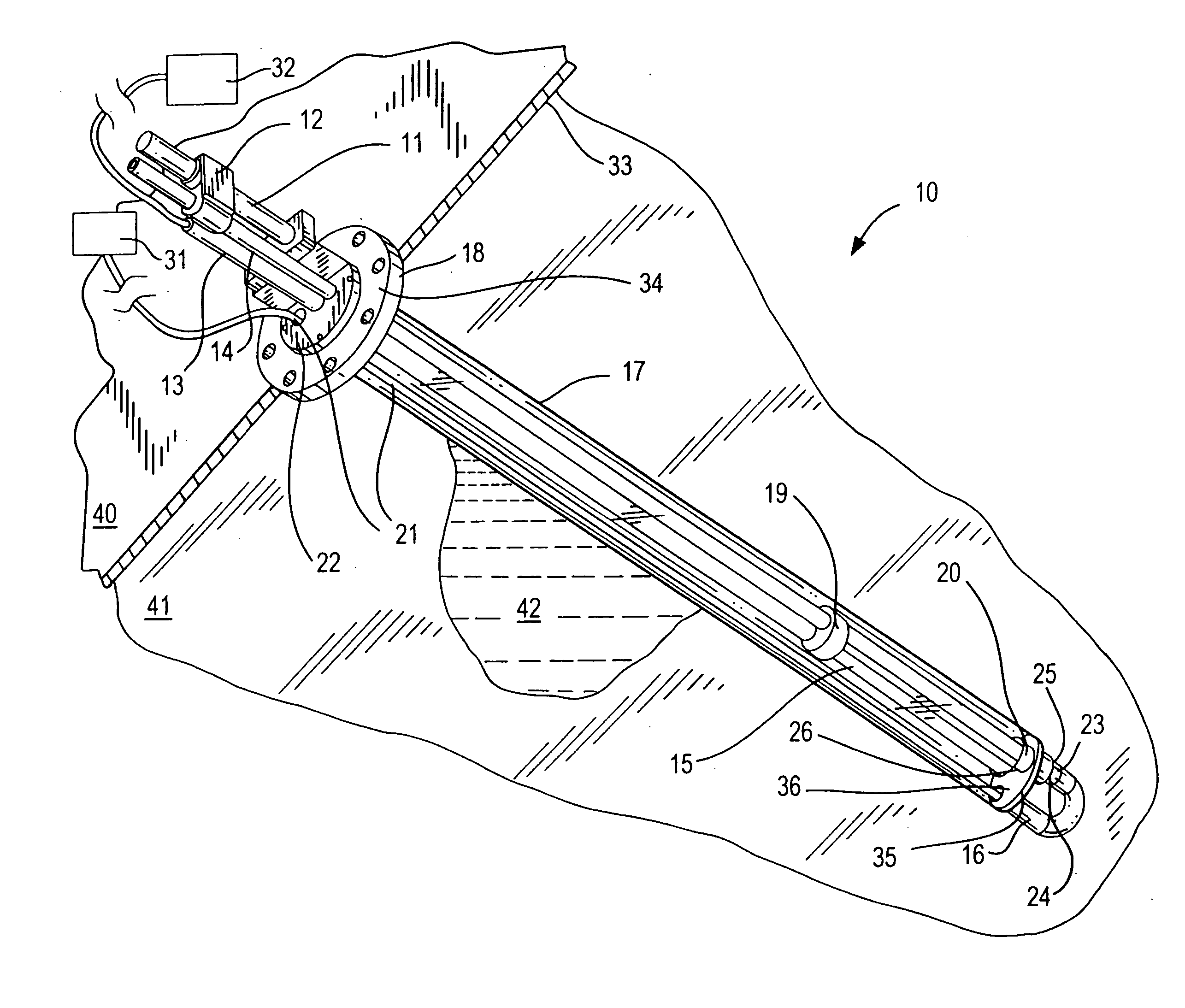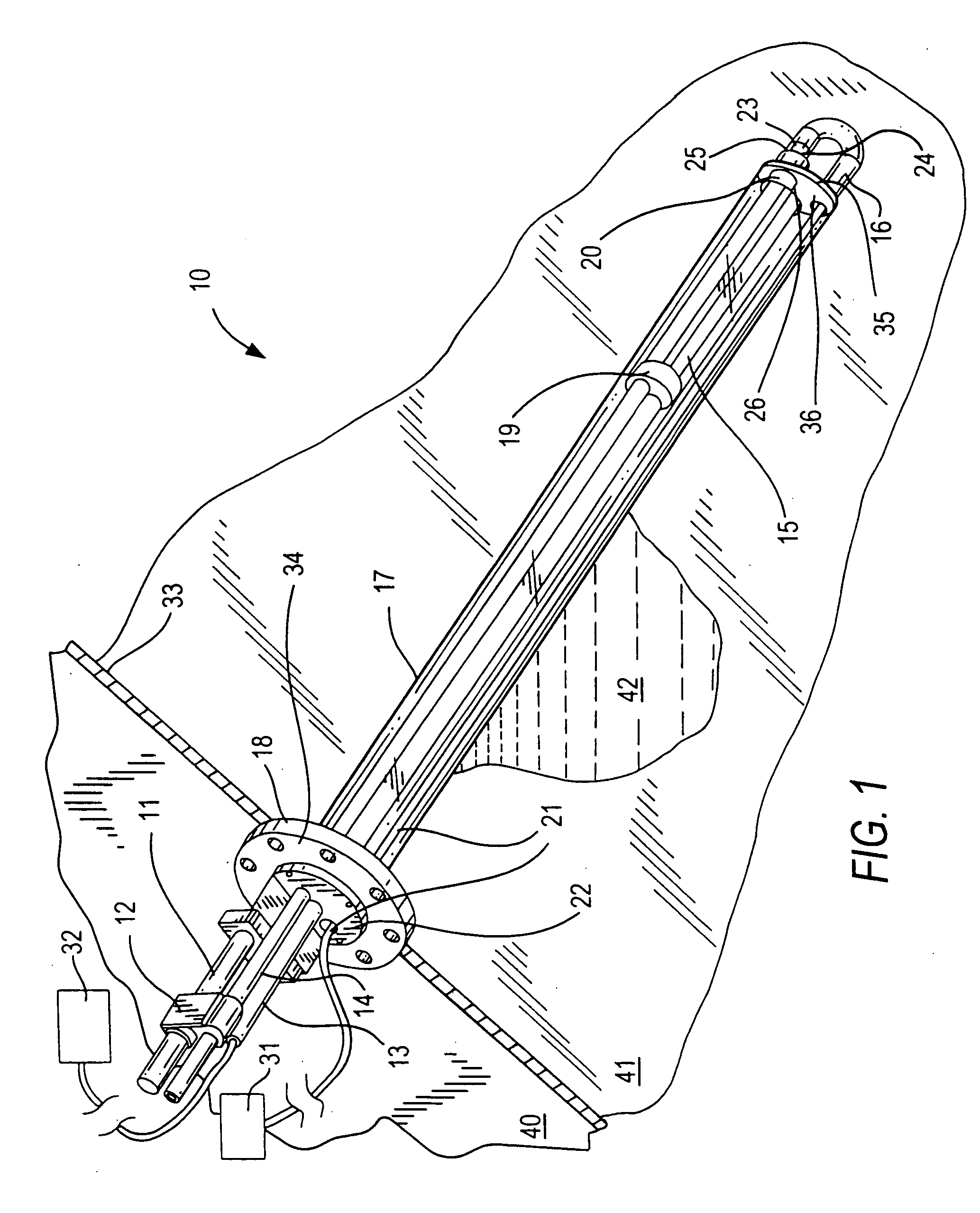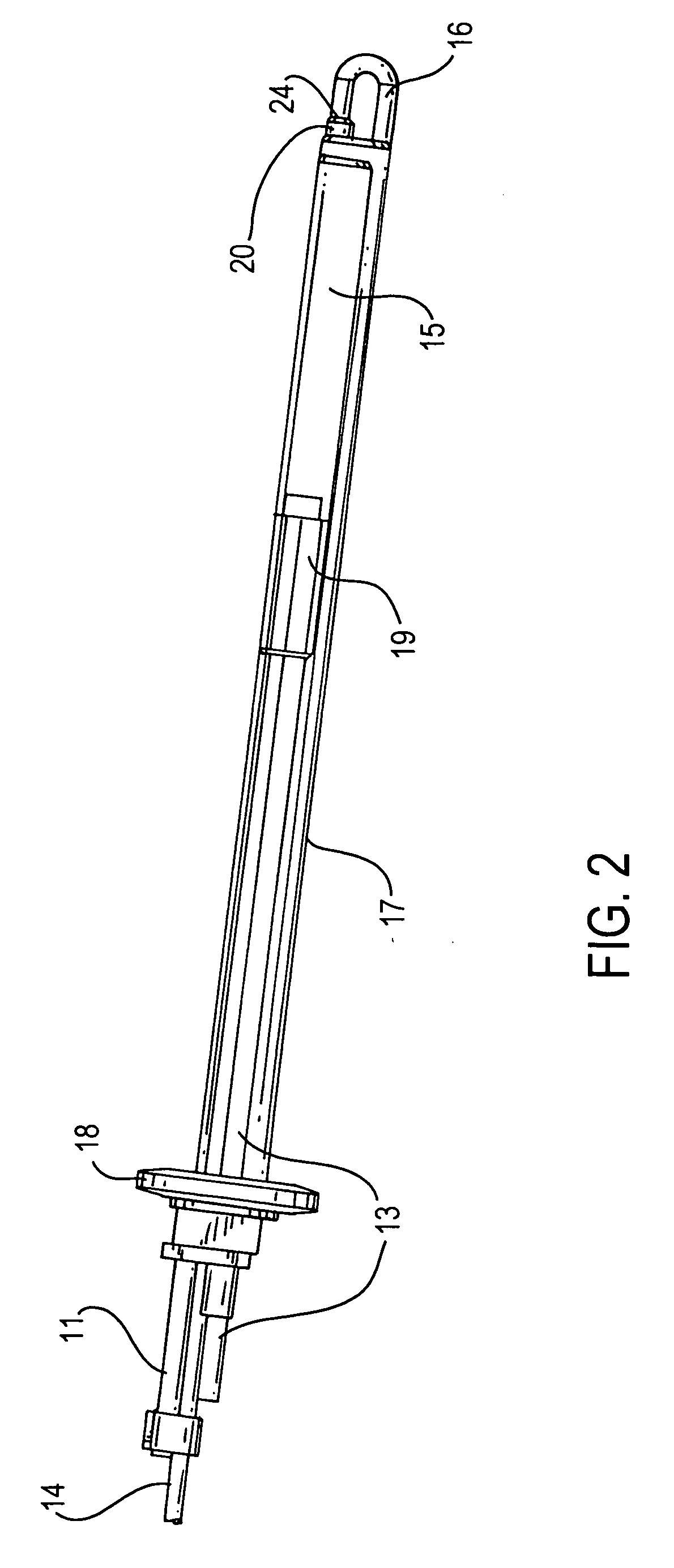Insertion fluid inspection device
a fluid inspection and fluid technology, applied in the direction of instruments, optical elements, applications, etc., can solve the problems of inability to accurately observe industrial processes, inability to provide the sharp focus that shorter lens length systems can provide, etc., to achieve improved lighting conditions, overcome adverse thermal effects, and improve quality
- Summary
- Abstract
- Description
- Claims
- Application Information
AI Technical Summary
Benefits of technology
Problems solved by technology
Method used
Image
Examples
Embodiment Construction
[0022] In FIG. 1, fluid inspection device 10 includes an elongated insertion well 17 that extends from rear end 34 at a wall 33 of the vessel, to front end 35 located within the vessel interior 41. The insertion well 17 is cylindrical in shape and is mounted at the rear end 34 to the vessel wall 33 in a sealing manner using, for example, flange mount 18, so that the inside of the insertion well is sealed off from fluid 42 and the outside of insertion well 17 is in contact with fluid 42. An instrument support bracket 22 is mounted to the flange mount 18 and can be used to support various external instruments of the inspection device 10.
[0023] A camera unit 15 is disposed inside of the insertion well 17 and is sealed off from the fluid 42. A lens 20 is disposed at front end 35 and extends through front end 35 so that a front end 25 of the lens 20 is in contact with the fluid 42 and a rear end of the lens 20 is inside of the insertion well 17 and in operative communication with the ca...
PUM
| Property | Measurement | Unit |
|---|---|---|
| angle | aaaaa | aaaaa |
| size | aaaaa | aaaaa |
| size | aaaaa | aaaaa |
Abstract
Description
Claims
Application Information
 Login to View More
Login to View More - R&D
- Intellectual Property
- Life Sciences
- Materials
- Tech Scout
- Unparalleled Data Quality
- Higher Quality Content
- 60% Fewer Hallucinations
Browse by: Latest US Patents, China's latest patents, Technical Efficacy Thesaurus, Application Domain, Technology Topic, Popular Technical Reports.
© 2025 PatSnap. All rights reserved.Legal|Privacy policy|Modern Slavery Act Transparency Statement|Sitemap|About US| Contact US: help@patsnap.com



